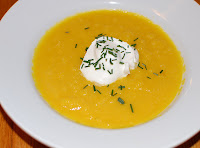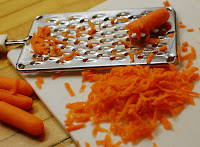 Braising is a long, slow, moist method of cooking used for cuts of meat, poultry, and game that are too tough to roast. Braising utilizes the combination of heat, time, and moisture to break down the tough connective tissue collagen in meat. Many classic braised dishes such as coq au vin are highly evolved methods of cooking tough and otherwise unpalatable foods. Pressure cooking and slow cooking (as in a crockpot) are other forms of braising.
Braising is a long, slow, moist method of cooking used for cuts of meat, poultry, and game that are too tough to roast. Braising utilizes the combination of heat, time, and moisture to break down the tough connective tissue collagen in meat. Many classic braised dishes such as coq au vin are highly evolved methods of cooking tough and otherwise unpalatable foods. Pressure cooking and slow cooking (as in a crockpot) are other forms of braising.Braised meats are usually cooked in one piece which are first seared in oil and then cooked with vegetables in a tightly covered pot with a close-fitting lid. The dish is then cooked in a low-temp oven or simmered on the stove top with a surprising small amount of braising liquid.
Braised Pot Roast
1 beef roast, lean chuck, bottom round, or rump, about 3 to 4 pounds
1 teaspoon salt
1/2 teaspoon ground black pepper
3 tablespoons olive oil
1 medium onion, coarsely chopped
1 rib celery, coarsely chopped
½ cup carrots, cut into ½” chunks
4 cloves garlic, smashed and minced
1 teaspoon crushed red pepper (optional)
1/2 teaspoon dried oregano
1 small bay leaf
1 cup beef broth
1 can (13 ounces) diced tomatoes (can substitute crushed)
8 ounces baby portabella mushrooms, washed and sliced (optional)
 In a large pot or Dutch oven, heat olive oil over high heat. Do not begin to sear meat until pan is quite hot. Salt and pepper the meat on both sides and brown the roast on all sides in the hot oil. Add the onions, celery, carrots and mushrooms; reduce heat to medium and sauté, stirring frequently, for about 2 minutes. Add the garlic and cook for 1 minute longer. Add the oregano, bay leaf, beef broth, and tomatoes and then bring to a boil.
In a large pot or Dutch oven, heat olive oil over high heat. Do not begin to sear meat until pan is quite hot. Salt and pepper the meat on both sides and brown the roast on all sides in the hot oil. Add the onions, celery, carrots and mushrooms; reduce heat to medium and sauté, stirring frequently, for about 2 minutes. Add the garlic and cook for 1 minute longer. Add the oregano, bay leaf, beef broth, and tomatoes and then bring to a boil.Reduce the heat to low; cover and simmer for 2 to 2 1/2 hours, or until the beef is very tender. You can also place the Dutch oven in a 325oF oven for the same length of time. We serve this pot roast with mashed potatoes or egg noodles and a tossed green salad.
Dried porcini mushrooms can be used in lieu of the baby portabella mushrooms. Put ¼ cup of dried porcini in a cup or small bowl and add enough boiling water to just cover them. Steep them for 20 minutes or until they've expanded. Drain them, reserving the liquid, and mince them. You can use the reserved mushroom liquid in lieu of some of the beef broth.




























